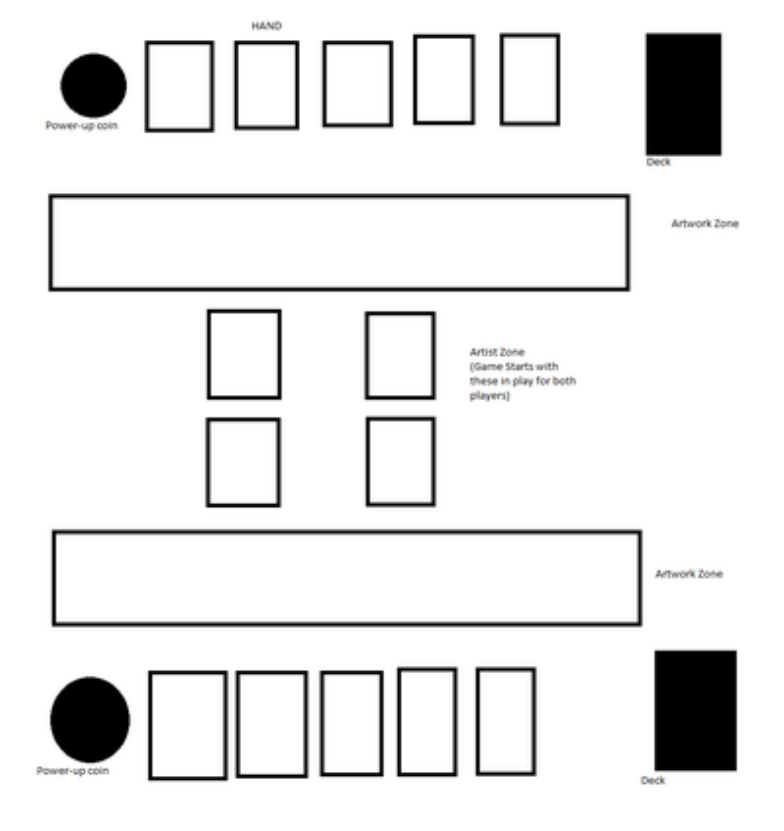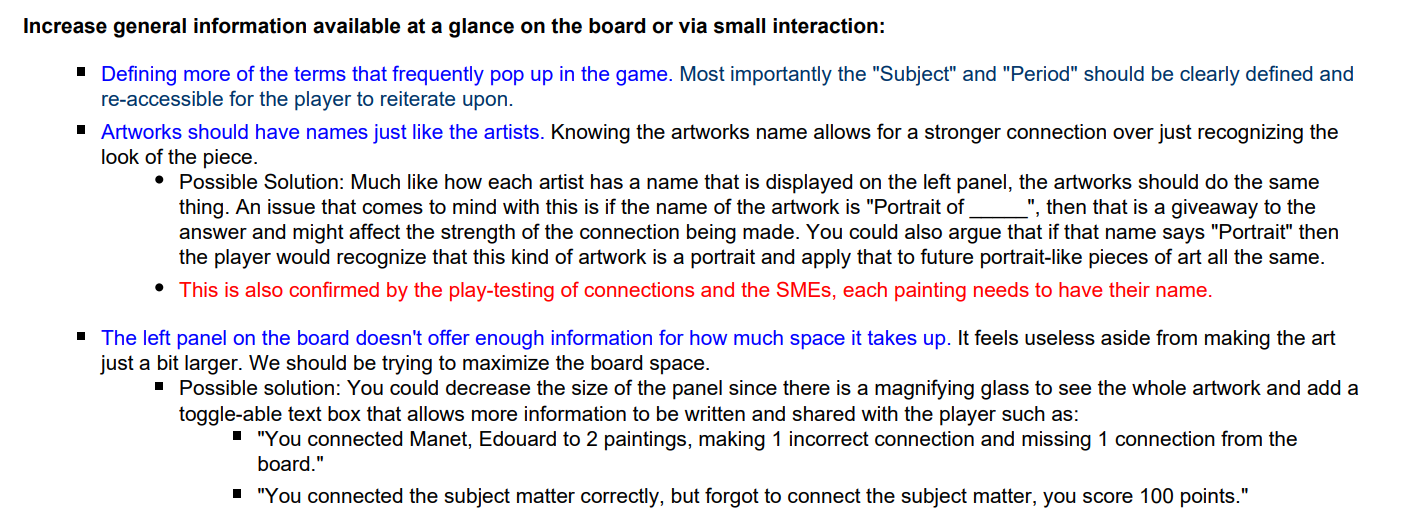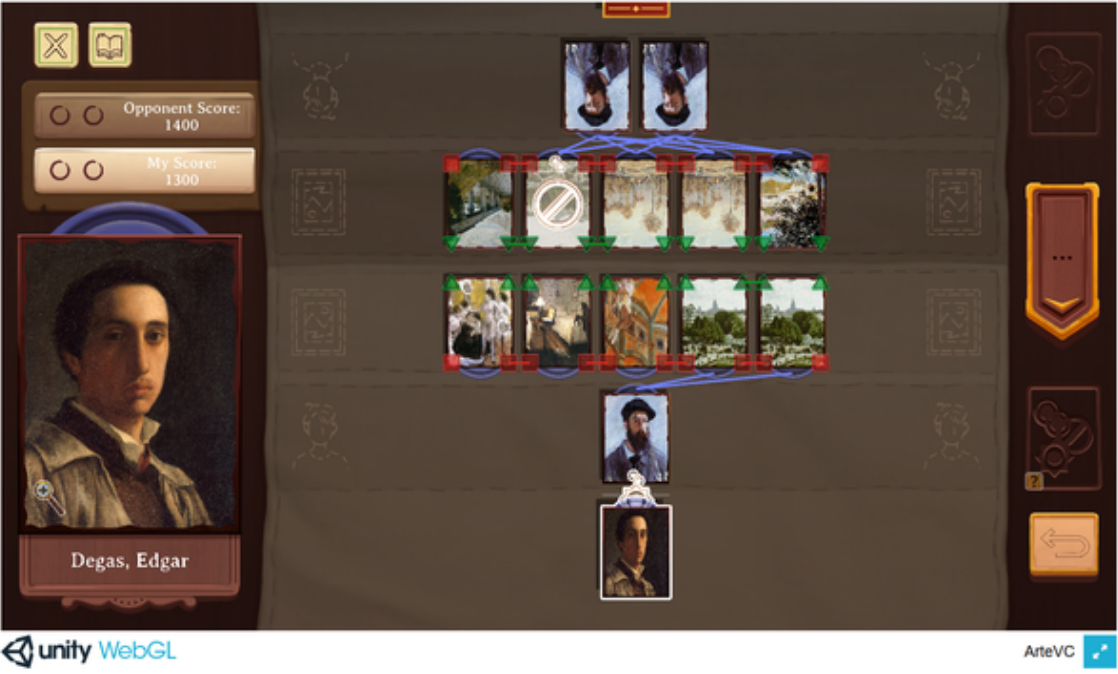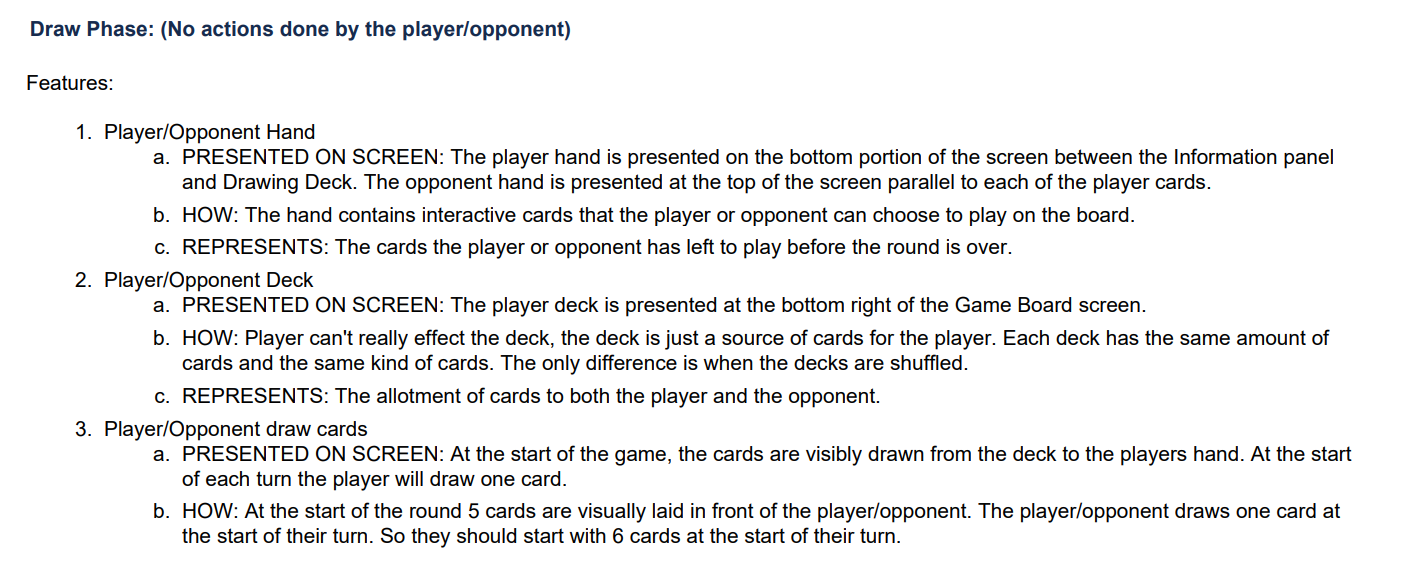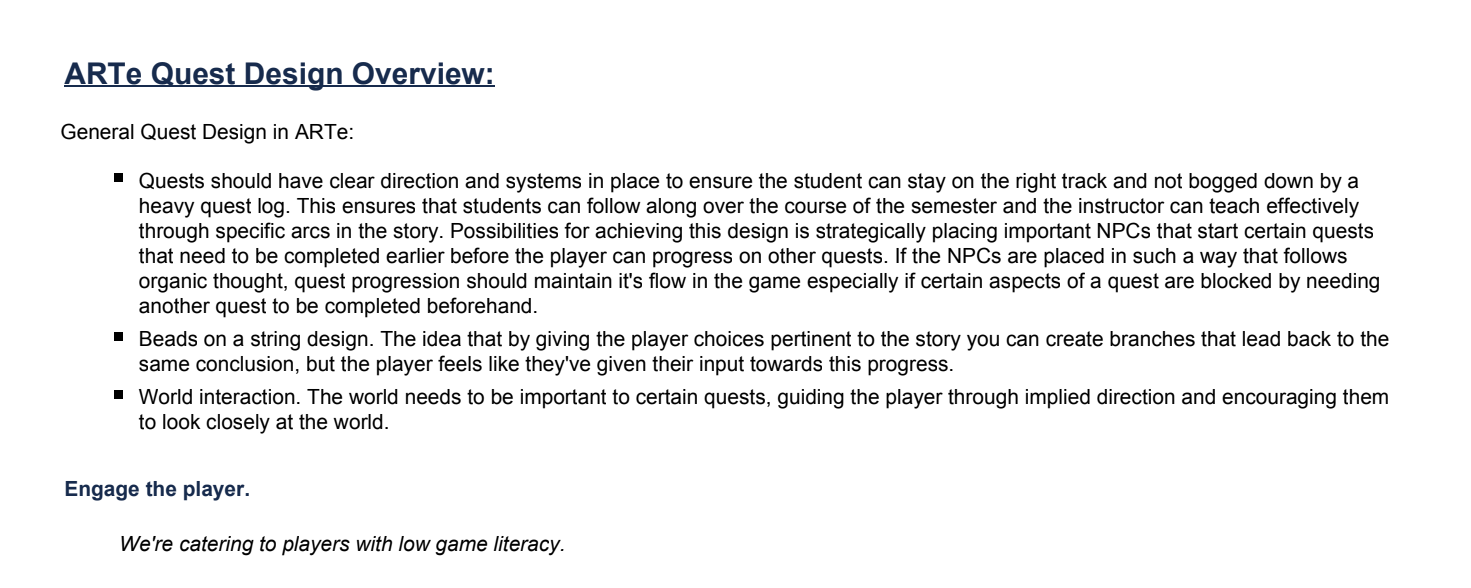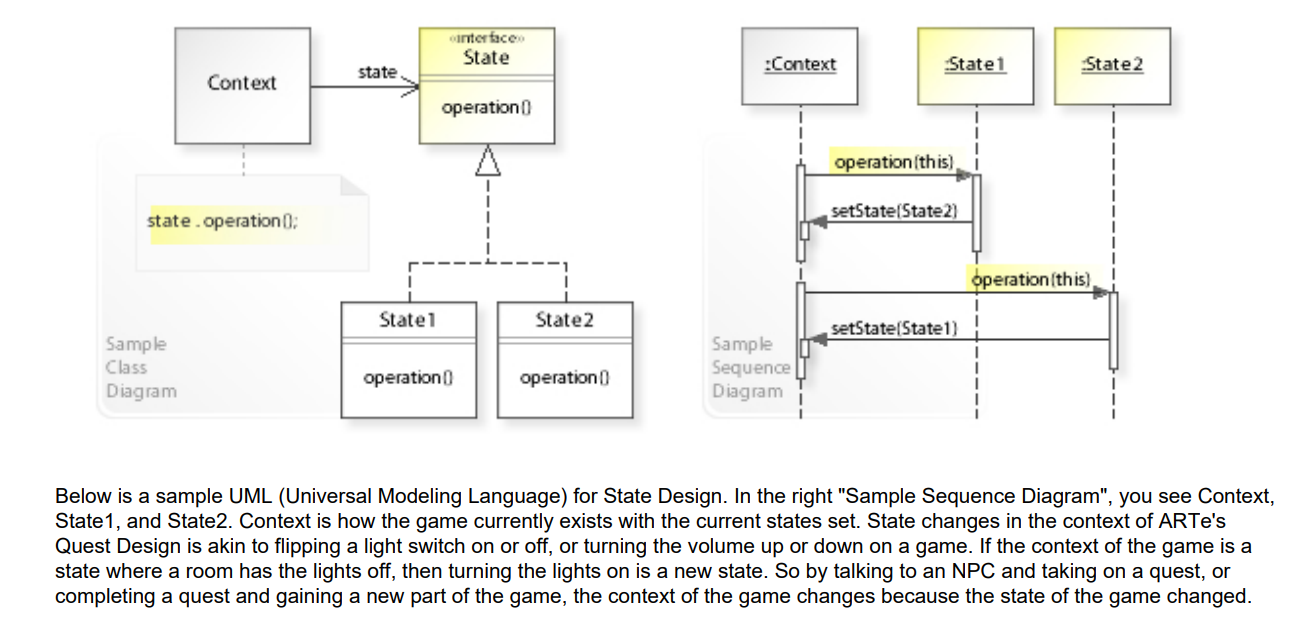I WAS RESPONSIBLE FOR:
Overhauling early prototype of “Connections” card based mini-game
Playtested early versions of minigame, wrote extensive documentation on potential changes, checked Confluence for weekly comments by Lead Designer, and corrected documents based on feedback.
Wrote lengthy “Prototype Request” documentation that laid out step-by-step instruction for every interaction made within the game in order to clearly define the changes needing to be made by the Developers.
Wrote early Quest Design documentation used as the base to be iterated upon by team members in the future.
Game is purchasable on Triseum’s website here: https://triseum.com/arte-lumiere/
I will include paragraph snippets of documentation since the documents are too extensive to feasibly include on this webpage.
You can view these documents in their entirety via the Google Drive link.
Connections - Improve on Ingame Mechanics Excerpt
Full Doc: https://drive.google.com/file/d/1DhyX_ZcB6zAvhaeHAH79ewgiftFMzZDM/view?usp=sharing
One of my first assignments at the LIVE Lab was to completely overhaul arguably the most important minigame for Arte: Lumiere. The player will play Connections more than any other minigame in order to progress in the story, so it was imperative that the minigame was easily readable but also had just enough nuance to be engaging over long periods of time.
I ended up creating a power-up system that relied on rewarding the player for being able to make Connections between an Artist and their paintings.
Connections - UI Feel and Improvements Excerpt
Full Doc: https://drive.google.com/file/d/1ZrNxY4pzBXVvTxYVxHgfu_478jKV7M65/view?usp=sharing
Left is the older version of Connections versus the newer version on the right.
Connections - Prototype Request
Full Doc: https://drive.google.com/file/d/1QFopxpl-X2LyKXsauF_NnHVgSDQtDBvS/view?usp=sharing
The fun part about this document was finally seeing the changes I had been mulling over be sent off to the Development team. A challenge I had in writing this document was shifting the audience I was writing for away from fellow designers and instead “hyper-technical” software developers. The pattern of PRESENTED ON SCREEN, HOW, and REPRESENTS is based on a template given to me by the Lead Developer at the time in order to make the prototype requesting process more universal between all Designers.
Lumiere Quest Design IDeation Excerpt
Full Doc: https://drive.google.com/file/d/1fIxoMvJOtBjTKzUAK-SylR8dahJS1tRK/view?usp=sharing
In this Ideation document I establish the core pillars for the team to build quests around. This helps keep the goals clear and relatively concise going forward into an Implementation document, which would discuss the “nitty-gritty” involving mechanics and questing loops.
Lumiere Quest Design Implementation Excerpt
Full Doc: https://drive.google.com/file/d/1I3093j-2wu0ja5y6yJeAHbFHPEv5x-X-/view?usp=sharing
In this excerpt I explain that state changes inside of the game, via quest steps or otherwise, have an affect both internally on the state of the game and contextually from the player’s perspective. While somewhat obvious, it’s still important for a designer to understand that some design choices will require these types of changes to the game and that itself is a factor we should be aware of in our design.
This is the main questing loop that I devised for the system. It’s very simple, but builds on the idea of state changes and allows for embellishment in between those steps, particularly in the Task Loop.

